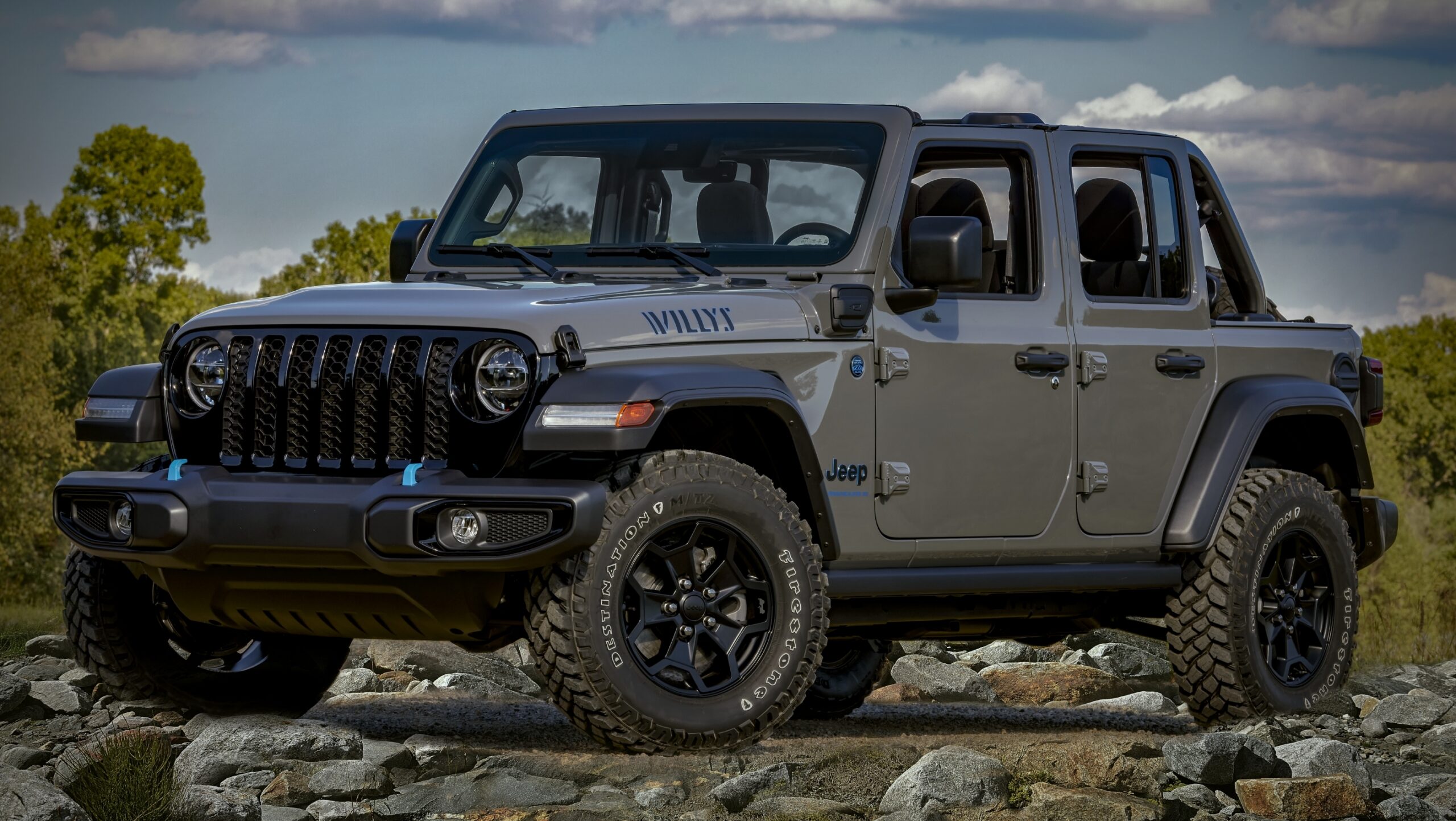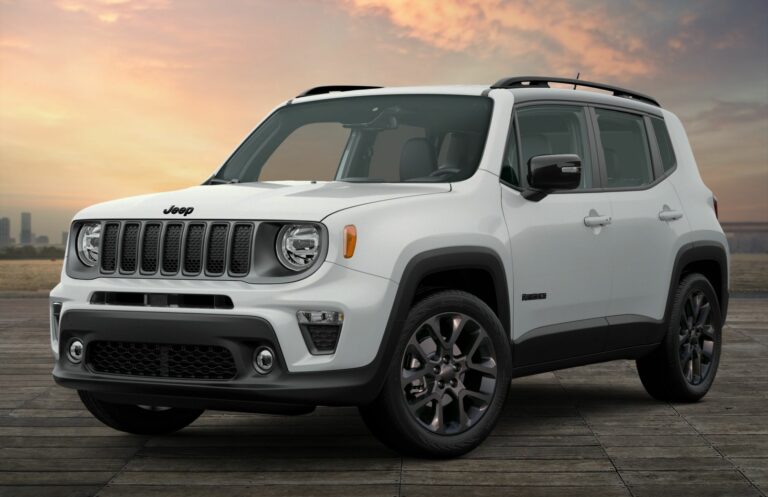The Unconventional Cargo Hold: Navigating the Jeep Wrangler 2-Door "Trunk"
The Unconventional Cargo Hold: Navigating the Jeep Wrangler 2-Door "Trunk" jeeps.truckstrend.com
When one thinks of a "trunk" in the traditional automotive sense, images of a sealed, separate compartment at the rear of a sedan or coupe often come to mind. However, the iconic Jeep Wrangler, particularly its nimble 2-door variant, defies conventional definitions. The "Jeep Wrangler 2 Door Trunk" isn’t a trunk in the typical sense; it’s a unique, highly adaptable, and often exposed cargo area that embodies the very spirit of the Wrangler: rugged utility, open-air freedom, and a need for creative solutions.
This article will delve deep into the nuances of the 2-door Wrangler’s rear cargo space, exploring its characteristics, understanding its limitations, and providing comprehensive guidance on how to maximize its potential. For every 2-door Wrangler owner or prospective buyer, mastering this unconventional "trunk" is key to fully embracing the adventurous lifestyle this legendary vehicle offers.
The Unconventional Cargo Hold: Navigating the Jeep Wrangler 2-Door "Trunk"
Understanding the Unique Cargo Space of the 2-Door Wrangler
The 2-door Jeep Wrangler’s rear cargo area is fundamentally different from a standard car trunk. Instead of a separate compartment, it’s an integrated extension of the passenger cabin, directly accessible from the rear seats and often exposed to the elements when the soft top is down or the hardtop panels are removed.
- Design and Access: Access is primarily via the side-hinged swing-gate tailgate, which opens wide to the right. This design is robust, capable of supporting the weight of a spare tire, and provides excellent clearance for loading bulkier items.
- Dimensions and Capacity: Behind the rear seats, the cargo space is relatively compact, typically offering around 12-13 cubic feet (approximately 360-370 liters) of volume. This is enough for a few grocery bags, a small duffel, or some essential off-road recovery gear. However, the true potential unlocks when the rear seats are folded or removed.
- Rear Seats: The Game Changer: The 2-door Wrangler’s rear bench seat is designed to fold forward, creating a significantly larger, flatter cargo floor. In most models, it can also be entirely removed, transforming the vehicle into a two-seater with an impressive cargo capacity of around 31 cubic feet (approx. 880 liters). This flexibility is crucial for anyone needing to haul larger items, camping gear, or multiple adventure sports equipment.
- Open-Air Nature: A defining characteristic is its susceptibility to the elements and lack of inherent security. With a soft top or removed hardtop panels, the "trunk" becomes an open-air bed, making it vulnerable to rain, dust, and theft. This necessitates proactive strategies for weather protection and security.

Maximizing the 2-Door Wrangler’s Cargo Potential
Despite its initial compact appearance, the 2-door Wrangler’s cargo area can be surprisingly versatile with the right approach and accessories.
Folding and Removing Rear Seats: The Ultimate Expansion

The most impactful way to increase cargo space is by manipulating the rear seats:
- Folding: Most Wrangler rear seats fold forward in a "tumble" fashion. This typically involves unlatching the seat back, folding it flat, and then tumbling the entire seat assembly forward against the front seats. This creates a longer, though not perfectly flat, load floor.
- Removing: For maximum space, the rear seats can often be fully unbolted and removed. This process usually requires basic tools (a wrench or socket set) and takes a few minutes. While not something you’d do daily, it’s invaluable for big hauls or extended trips. Always store the removed seats safely to prevent damage.

Strategic Packing and Vertical Space Utilization
Given the limited footprint, thinking vertically and strategically is essential:
- Soft Bags Over Hard Luggage: Duffel bags, backpacks, and soft coolers conform better to irregular spaces than rigid suitcases, allowing for more efficient packing.
- Stacking and Layering: Utilize the height available. Stack items carefully, with heavier items at the bottom.
- Cargo Nets and Bungee Cords: These are indispensable for securing items and preventing them from shifting or flying out during off-road excursions or quick stops. Attach points are usually available in the cargo area.
- Organizers and Bins: Small, modular bins or dedicated cargo organizers can help keep smaller items, tools, or recovery gear from rolling around.
Benefits and Limitations of the 2-Door "Trunk"
Understanding both the advantages and disadvantages helps in planning and accessorizing.
Benefits:
- Maneuverability: A shorter wheelbase means better break-over angles off-road and easier navigation in tight urban spaces. The compact cargo area contributes to this overall agility.
- Easy Access: The wide-opening tailgate provides excellent access for loading and unloading, especially for bulky items that might not fit through a smaller sedan trunk opening.
- Adaptability: The ability to fold or remove rear seats allows for a quick transformation from passenger vehicle to cargo hauler.
- Off-Road Prowess: A shorter rear overhang reduces the risk of scraping the bumper on steep ascents or descents, a critical advantage for serious off-roading.
- Modularity: The open design lends itself well to aftermarket customization, allowing owners to tailor the space precisely to their needs.
Limitations:
- Limited Capacity (Seats Up): With the rear seats in place, the cargo space is genuinely small, making it challenging for more than one or two people’s luggage for an extended trip.
- Security Concerns: The open-air nature and soft-top options mean the cargo area is inherently less secure than a traditional sealed trunk. Valuables left exposed are an easy target.
- Exposure to Elements: Rain, dust, and direct sunlight can affect items stored in the cargo area, especially without a hardtop or proper tonneau cover.
- Lack of Privacy: Anyone can see what’s in your "trunk" if you have a soft top or removed panels, inviting unwanted attention.
Enhancing Security and Organization in Your Wrangler’s Cargo Area
Addressing the limitations, particularly security and organization, is crucial for any 2-door Wrangler owner.
- Security Enclosures/Decks: Numerous aftermarket solutions exist to create a secure, lockable compartment within the cargo area. Brands like Tuffy Security Products offer steel security decks that sit flush with the top of the tailgate, creating a hidden, lockable space underneath. These are invaluable for storing recovery gear, tools, or valuables.
- Cargo Management Systems:
- Cargo Nets and Bars: Simple yet effective for preventing items from sliding around.
- MOLLE Panels: Mountable panels that allow for attaching pouches, tools, and gear in a highly organized and accessible manner. These can be mounted on the tailgate, side walls, or seat backs.
- Under-Seat Storage: Small bins that fit under the front or rear seats can provide discreet storage for smaller items.
- Weather Protection:
- Cargo Liners/Mats: Protect the carpet from dirt, mud, and spills.
- Tonneau Covers: For soft-top Wranglers, a tonneau cover can protect the cargo area from light rain and provide a modicum of privacy when the top is down.
- Hardtop: The ultimate weather protection, though it limits the open-air experience. Even with a hardtop, the tailgate opening remains a point of access.
"How-To" Guides for Optimizing Your 2-Door Wrangler’s Cargo Space
How to Fold and Remove Rear Seats (General Steps):
- Clear the Area: Remove any items from the floor around the seat and under the seat.
- Fold Seat Back: Locate the latch (usually a strap or lever on the side or top of the seat back) and pull it to release the seat back, folding it flat against the seat cushion.
- Tumble Forward: For tumbling, locate the release handle (often a strap near the bottom front of the seat) and pull it firmly. Lift the entire seat assembly and push it forward until it rests against the front seats.
- Remove (if applicable): If your seat is designed for removal, there will be mounting bolts or quick-release levers at the base. Unbolt or release these, and carefully lift the seat out. It’s often heavy, so enlist help if needed.
Tips for Packing Efficiently:
- Roll, Don’t Fold: Rolling clothes saves space and reduces wrinkles.
- Use Soft-Sided Bags: As mentioned, these conform better to irregular spaces.
- Utilize Gaps: Fill small gaps with soft items like towels, jackets, or sleeping bags.
- Heavy Items Low and Forward: Keep the center of gravity low and distribute weight evenly. Secure heavy items to prevent shifting.
- Keep Essentials Accessible: Store frequently needed items (first-aid kit, water, snacks, recovery strap) on top or in easily reachable side pockets.
Choosing the Right Accessories for Your 2-Door Wrangler Cargo Area
The aftermarket is flooded with products designed to enhance the 2-door Wrangler’s cargo utility.
- Cargo Mats/Liners: Essential for protecting your vehicle’s interior from mud, dirt, and spills. Look for custom-fit, all-weather options.
- Cargo Nets and Tie-Downs: Crucial for securing gear, preventing it from shifting during braking or off-road maneuvers.
- Under-Seat Storage Bins: Perfect for discreetly storing small tools, valuables, or emergency supplies.
- Security Enclosures/Lock Boxes: A must-have for peace of mind, allowing you to secure valuables even when the top is off. Brands like Tuffy, Smittybilt, and Bestop offer various solutions.
- MOLLE Panels: Great for organizing tools, first-aid kits, and other small items on the tailgate or side walls, keeping them easily accessible.
- Roof Racks: While not part of the "trunk" itself, a roof rack (either a gutter-mount or full-frame option) significantly expands the Wrangler’s overall carrying capacity for larger items like kayaks, bikes, or rooftop tents, effectively acting as an external trunk extension.
Practical Advice and Actionable Insights
- Assess Your Needs: Before buying accessories, consider how you primarily use your Wrangler. Daily commuting, weekend camping, or serious off-roading will dictate different storage and security priorities.
- Invest in Security Early: Given the Wrangler’s open design, a robust security solution for your cargo area should be one of your first investments, especially if you plan to carry valuables.
- Think Beyond the Interior: Don’t forget that roof racks, hitch-mounted carriers, and even spare tire-mounted bags can dramatically increase your carrying capacity.
- Balance Capacity with Weight: The 2-door Wrangler has a lower payload capacity than its 4-door counterpart. Be mindful of the weight of your gear and accessories.
- Embrace the Lifestyle: The 2-door Wrangler’s "trunk" demands a more intentional approach to packing and organization. See it as part of the adventure, not a limitation.
Price Table: Common Jeep Wrangler 2-Door Cargo Area Accessories
Since the "Jeep Wrangler 2 Door Trunk" is an integrated part of the vehicle and not a separate, purchasable item with a distinct price, the following table provides approximate price ranges for common aftermarket accessories designed to enhance, secure, or expand the utility of the 2-door Wrangler’s cargo area. Prices can vary significantly based on brand, material quality, and specific features.
| Accessory Type | Description / Benefit | Approximate Price Range (USD) |
|---|---|---|
| All-Weather Cargo Mat | Protects the cargo area carpet from dirt, water, and wear. Custom fit. | $50 – $150 |
| Cargo Net / Bungee Cords | Secures loose items, preventing shifting and rattling. | $20 – $70 |
| Under-Seat Storage Box | Provides discreet, secure storage for small items under front or rear seats. | $40 – $120 |
| Rear Cargo Security Deck | Creates a lockable, hidden compartment within the cargo area. Steel construction. | $300 – $700 |
| Tailgate MOLLE Panel | Mounts on the tailgate, allowing for organized attachment of gear pouches and tools. | $80 – $200 |
| Side Wall MOLLE Panels | Similar to tailgate panels, mounts on interior side walls for additional organization. | $100 – $300 (per pair) |
| Soft Tonneau Cover | Covers the cargo area when the soft top is down, offering weather protection & privacy. | $150 – $350 |
| Interior Cargo Divider | Separates the cargo area into compartments, often adjustable. | $70 – $180 |
| Hitch-Mounted Cargo Carrier | External platform for carrying extra gear, bikes, or coolers. Plugs into hitch receiver. | $100 – $400 |
| Roof Rack System | External frame for carrying large items like kayaks, bikes, or roof top tents. | $300 – $1,500+ |
Frequently Asked Questions (FAQ) about the Jeep Wrangler 2-Door "Trunk"
Q1: How much cargo space does a 2-door Jeep Wrangler actually have?
A1: With the rear seats in place, it has about 12-13 cubic feet. When the rear seats are folded or removed, the space expands significantly to around 31 cubic feet, making it much more versatile for larger items.
Q2: Can I remove the rear seats in my 2-door Wrangler?
A2: Yes, in most 2-door Wrangler models (JK and JL generations), the rear seats are designed to be removable. This usually requires unbolting them, which can be done with basic tools. Always refer to your owner’s manual for specific instructions.
Q3: Is the 2-door Wrangler’s cargo area secure from theft?
A3: By default, no. With a soft top or removed hardtop panels, the cargo area is very exposed and not secure. It’s highly recommended to invest in aftermarket security solutions like a lockable security deck, console vault, or secure storage boxes to protect valuables.
Q4: What are the best accessories for the 2-door Wrangler’s cargo area?
A4: Essential accessories include all-weather cargo mats, cargo nets, and security enclosures (like a lockable deck). Depending on your needs, MOLLE panels for organization, under-seat storage, and potentially a roof rack for external capacity are also highly beneficial.
Q5: How do I protect my gear from rain and dust in the cargo area?
A5: For light protection, a soft tonneau cover can help. For full protection from the elements, ensuring your hardtop is properly installed or having a weather-tight soft top is necessary. For items inside, waterproof bags or containers are advisable, especially when off-roading or expecting rain.
Q6: Can I sleep in the back of a 2-door Wrangler with the seats down?
A6: While technically possible for a single, average-sized person to lay down (especially with the rear seats removed), the space is quite limited in length and width. It’s often more comfortable for quick naps or as a last resort, rather than a primary sleeping arrangement. Many prefer rooftop tents or ground tents for camping.
Conclusion: Embracing the Versatile Compact
The "Jeep Wrangler 2 Door Trunk" is far more than a simple storage compartment; it’s a testament to the Wrangler’s philosophy of adaptable utility. While it may challenge traditional notions of cargo space with its compact dimensions and open nature, it offers unparalleled flexibility for adventure-seekers and daily drivers alike. By understanding its unique characteristics, employing smart packing techniques, and investing in the right aftermarket solutions, owners can transform this seemingly small area into a highly functional and secure extension of their adventurous lifestyle. The 2-door Wrangler’s cargo space isn’t just for hauling; it’s an integral part of the experience, inviting creativity and resourcefulness on every journey.





